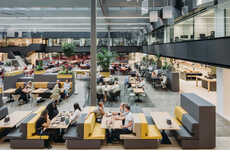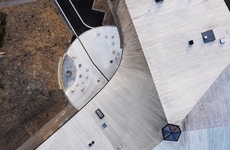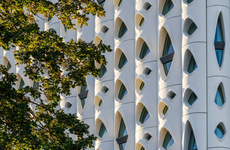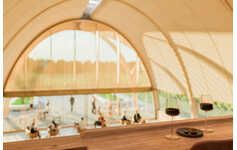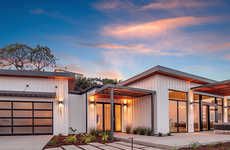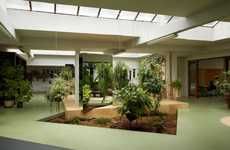
Powerhouse Kjorbo is the First Building Renovated to Be Energy-Positive
Rahul Kalvapalle — May 13, 2014 — Eco
References: powerhouse.no & gizmag
Powerhouse Kjorbo, an office building located near the Norwegian capital Oslo, has been renovated to be able to produce more energy than it consumes. This makes the building Norway's first energy-positive building and the first building in the world to be renovated into an energy-positive structure.
Powerhouse Kjorbo is fitted with solar panels that are expected to produce over 200,000 Kilowatt-hours every year, with all excess, unused energy being fed back to the power grid. The building is equipped with tight-fitting walls, ceilings and windows to minimize heat loss. Exterior sun shading and exposed concrete decks help keep the building cool in the summer.
The renovation of Powerhouse Kjorbo was the result of a collaboration between firms looking to work together to develop energy-positive buildings. The group includes architecture firm Snohetta, construction company Skanska, environmental organization Zero, aluminum supplier Hydro and property management company Entra Eiendom.
Powerhouse Kjorbo is fitted with solar panels that are expected to produce over 200,000 Kilowatt-hours every year, with all excess, unused energy being fed back to the power grid. The building is equipped with tight-fitting walls, ceilings and windows to minimize heat loss. Exterior sun shading and exposed concrete decks help keep the building cool in the summer.
The renovation of Powerhouse Kjorbo was the result of a collaboration between firms looking to work together to develop energy-positive buildings. The group includes architecture firm Snohetta, construction company Skanska, environmental organization Zero, aluminum supplier Hydro and property management company Entra Eiendom.
Trend Themes
1. Energy-positive Buildings - Renovating buildings to produce more energy than they consume presents opportunities for sustainable architecture and construction.
2. Solar Technology Integration - Integrating solar panels into building structures opens up possibilities for renewable energy generation and reduced reliance on the power grid.
3. Collaborative Sustainable Development - Collaboration between architecture firms, construction companies, environmental organizations, and property management companies is key to driving innovative solutions for energy-positive buildings.
Industry Implications
1. Architecture - The architecture industry can capitalize on the demand for sustainable design by focusing on energy-positive building renovations and solar integration.
2. Construction - The construction industry can embrace energy-positive building practices to reduce carbon footprint and tap into the growing market for sustainable construction projects.
3. Renewable Energy - The renewable energy industry can explore new markets and partnerships by providing solar technology solutions for energy-positive building renovations.
5
Score
Popularity
Activity
Freshness


